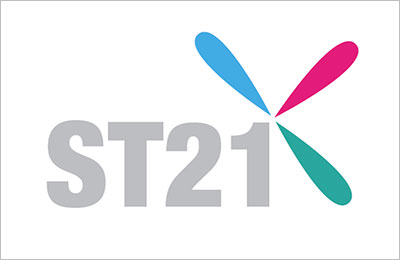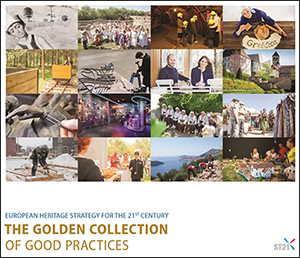Location of the initiative:

Relation to Strategy 21 Recommendations:
D7 - give consideration to heritage in sustainable tourism development policies
Time span of the initiative:
The strategy development took a year (2014-2015). The Strategy and was published in June 2015. The strategy and additional Action plan is for 2015-2020.
Brief description of the initiative:
The Fortress of Suomenlinna was built gradually from 1748 onwards on a group of islands belonging to the district of Helsinki. The original fortress was built using local rock and fortified with a system of bastions over varied terrain. Today, Suomenlinna is one of the most popular tourist attractions in Finland and constitutes a district of Helsinki with 800 inhabitants. It was inscribed on the World Heritage list in 1991.
Suomenlinna’s appeal lies in its history, sights and maritime location and environment as well as its close proximity to the city centre of Helsinki. Each year, more than a million people visit Suomenlinna. The high number of visitors both from abroad and from the metropolitan area needs to be reconciled with the cultural values of the site and the well-being of the local community. Sustainable tourism strategy (2015) aims to ensure the site’s cultural, social, ecological and economic prosperity.
The strategy provides guidelines to tourism services in supporting the conservation of Suomenlinna’s cultural and natural value and increases awareness of the site’s World Heritage value. A further goal is to support tourism service providers in leveraging World Heritage values as added value in their businesses.
This strategy was produced by the Governing Body of Suomenlinna, the World Heritage Site Manager, in partnership with its stakeholders in the tourism industry. The involvement of a broad range of stakeholders is crucial, as visitors do not differentiate between the producers of tourism services. The visitor experience is created as a result of the service chain. The strategic choice of the service providers at Suomenlinna is to work together to develop their operations in the chosen direction and to maintain harmonised communications and an agreed-upon standard of quality.
The sustainable tourism strategy includes a separate action plan that, combined with the strategy, constitutes a roadmap for the development of tourism at Suomenlinna from now until 2020. The action plan is a guideline for the site manager, the Governing Body of Suomenlinna operations. The action plan also gives a common goal to all the stakeholders of the site.
According to strategic vision, in 2020 Suomenlinna will be an internationally valued sea fortress where tourism and conservation share the common goal of maintaining an authentic and viable World Heritage Site. Suomenlinna is also a place where entrepreneurs find success by providing high-quality services, where residents have a good quality of life, and where visitors enjoy participatory experiences that increase their wellbeing. In 2020, Suomenlinna will be a model destination for sustainable tourism. Sustainable tourism strategy has five focus areas which guide Suomeninna’s stakeholders own and joint development efforts and day-to-day work.
- managing the impacts of tourism and takin advantage of its benefits
- maintaining a-high-quality visitors experience
- emphasising the image of a year-round destination
- developing networked activities
- communicating World Heritage values
All of Suomenlinna’s tourism industry stakeholders and local tourism operators must direct their own and joint development efforts towards achieving these goals. This will ensure that, in 2020, tourism at Suomenlinna will support the conservation of World Heritage, quality has become a strength, the site has a stronger image as a year-round destination, networks operate effectively, and the site’s entrepreneurs and other operators work together in communicating World Heritage values. No individual stakeholder can achieve these goals on their own, but collectively we are stronger.
Objectives of the initiative:
This strategy was prepared with the aim of sustainable and continuous development of World Heritage site as well as making Suomenlinna a model destination for sustainable tourism.
Strategy also serves the dual objectives of site conservation and tourism development. This Sustainable tourism strategy provides for site manager and all stakeholders especially tourism service providers a tool to manage site efficiently, responsibly and sustainably.
Brief assessment of the initiative’s results:
The Governing body of Suomenlinna has been an active promoter of sustainable tourism. Suomenlinna participated in the UNESCO’s Nordic-Baltic pilot program, which aimed to develop the management of sustainable tourism in fourteen World Heritage sites from 2012 to 2014. This UNESCO project strengthened Suomenlinna’s commitment to becoming a model destination for sustainable tourism and one that shares its knowledge and expertise with others.
The sustainable tourism strategy includes a separate action plan which was created to ensure that the sustainable tourism strategy for Suomenlinna is implemented and kept up-to-date and is a concrete guideline for the tourist attraction. Its implementation is monitored and reported on annually. The action plan is reviewed annually at the tourism network meeting for the attraction. At the same time, the status of the implementation and any need for changes will be discussed. The action plan includes both larger projects and smaller, concrete measures that will ensure the implementation of the sustainable tourism strategy for Suomenlinna.
The action plan covers the period from 2015 to 2020. Like the strategy, the action plan also applies broadly to various operators connected to Suomenlinna, such as the World Heritage Site manager, the Governing Body of Suomenlinna, tourism service providers involved with the site and offices of the City of Helsinki.
The action plan presents goals for the focus areas selected in the strategy. The goals are expanded upon through various actions. The plan also defines who will carry out the actions, as well as the schedule for their implementation. The action plan is intended to function as a practical guideline for all parties involved on how to achieve common objectives. The plan will be evaluated annually and additions will be made as necessary.
Promoting sustainable tourism and developing a specific strategy for enhancing it benefitted greatly from close co-operation at global, regional, national and local levels. First, at the regional and global level, the site was part of Nordic-Baltic sustainable tourism project, a pilot project that put into practice the Unesco World Heritage Centre’s sustainable tourism programme and action plan. Second, at the national level, there was tight cooperation between Finnish World Heritage sites, both cultural and nature sites to promote sustainable tourism together. This signified developing best practices and guidelines for all national heritage sites. The key outcome of the cooperation at the national level was developing joint guidelines for sustainable tourism. Finally, from a very practical point of view, cooperation at the site level itself was important for promoting sustainable tourism among different stakeholders and key to its implementation.
Sustainable tourism can be identified as a key trend and a method that potentially provides solutions to some of the pressing problems that World Heritage Sites face. The successful formulation of the sustainable tourism strategy in co-operation with a diverse range of stakeholders has attracted a lot of international and national interest. The eventual results will depend on the successful implementation and evaluation of the strategy.
The Sustainable tourism strategy for Suomenlinna has been presented as a best practice case in
- The Nordic World Heritage Conference, Reykjavik 2016
- European Heritage Days ”Heritage and Sustainable Development” workshop, Helsinki 2017
Unesco publication World Heritage Europe Today 2016 selected strategy as an example of good practice example from the day-to-day work of site managers. Sustainable tourism strategy has also been adopted as a good an example for other Nordic world heritage sites.
Online resources:
Contact:
Milla Öystilä
Tourism Specialist
The governing Body of Suomenlinna
milla.oystila(a)suomenlinna.fi





